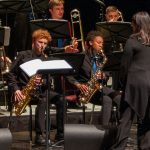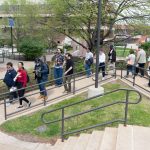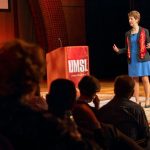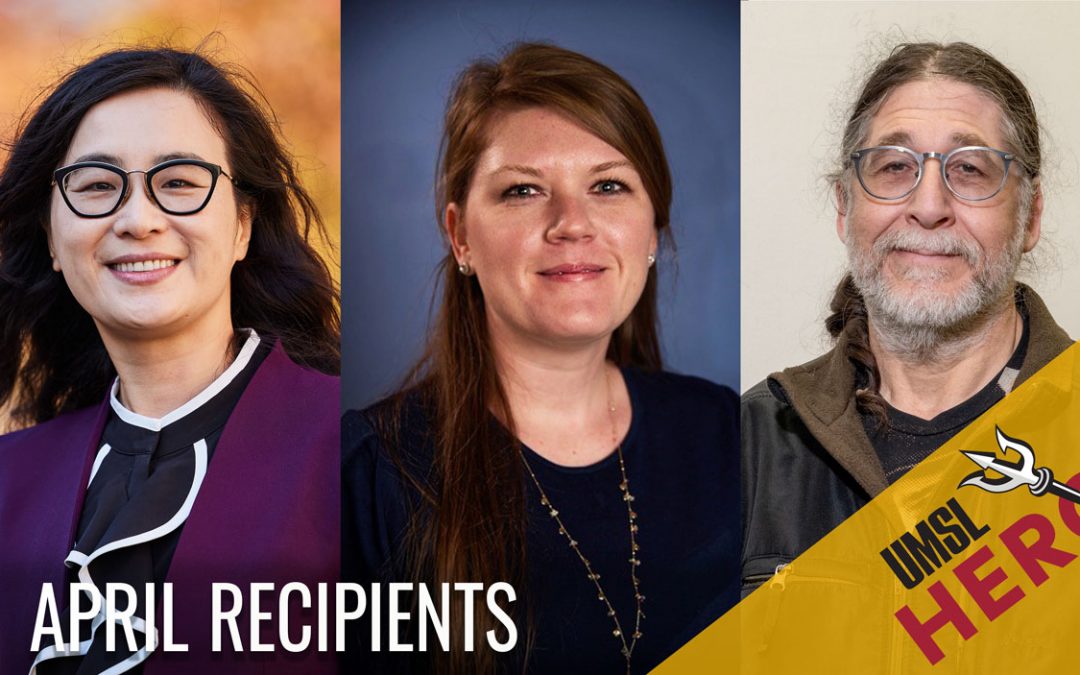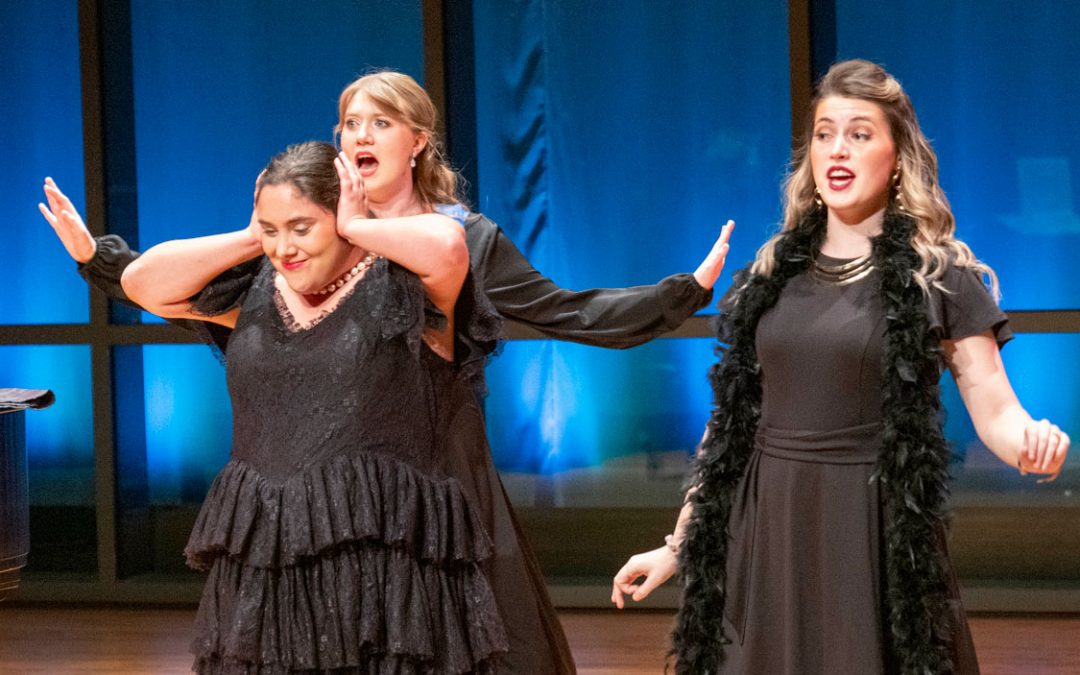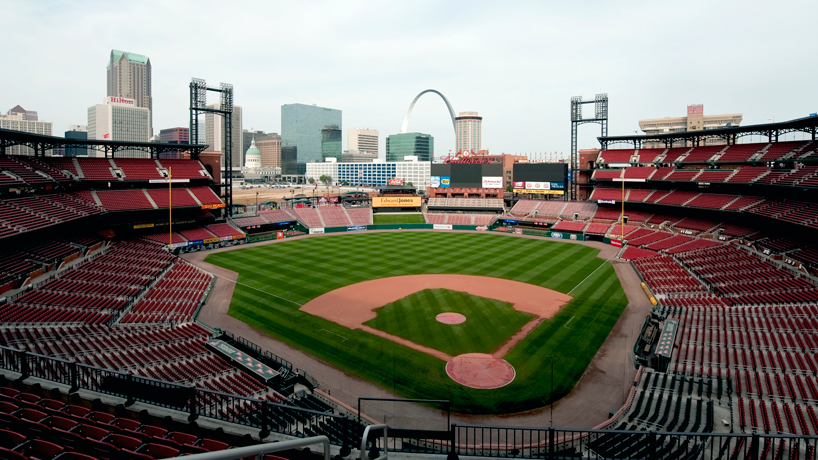
The view from Busch Stadium showcases the St. Louis skyline and the Gateway Arch. At the time the photo was taken, Ballpark Village was still under construction. (Photos by August Jennewein.)
In October 1964, the St. Louis Cardinals were locked in a dead heat for the National League pennant – tied for first place with the Cincinnati Reds and with the Philadelphia Phillies trailing by one game.
Connie Sexauer remembers it vividly. She was sitting in the stands during the last game of the season when the Cards clinched. But she didn’t run onto the field like many of her fellow fans. No, she ran home – for a very good reason.
“So I could get a chair and a blanket and come back and lay outside the stadium all night in order to get tickets,” Sexauer said with a laugh. “I went to all four World Series games in 1964, and my tickets were $4 a piece to sit in the bleachers.”
Sexauer, a lifelong Cardinals fan, University of Missouri–St. Louis alumna and retired University of Wisconsin–Marathon County history professor, is the author of a new book chronicling the history of the team, its owners and its ballparks, from Sportman’s Park to the current iteration of Busch Stadium.
The central theme of, “From a Park, to a Stadium, to a Little Piece of Heaven,” is that urban stadiums, like Busch, bring people from different backgrounds together and bolster surrounding businesses and neighborhoods. As an urban historian, Sexauer believes the location of Busch Stadium leads to a richer experience than far-flung stadiums at the outskirts of metro areas.
“It sits right in the heart of the city,” she said. “It’s not surrounded by parking lots. I really do not like the Kansas City stadium and the Milwaukee stadium because they’re all built around tailgating.”
She has strong opinions about what a baseball stadium – and experience – should be, and tailgating isn’t involved – that’s for football season. To her, it can’t compete with the atmosphere urban stadiums foster.
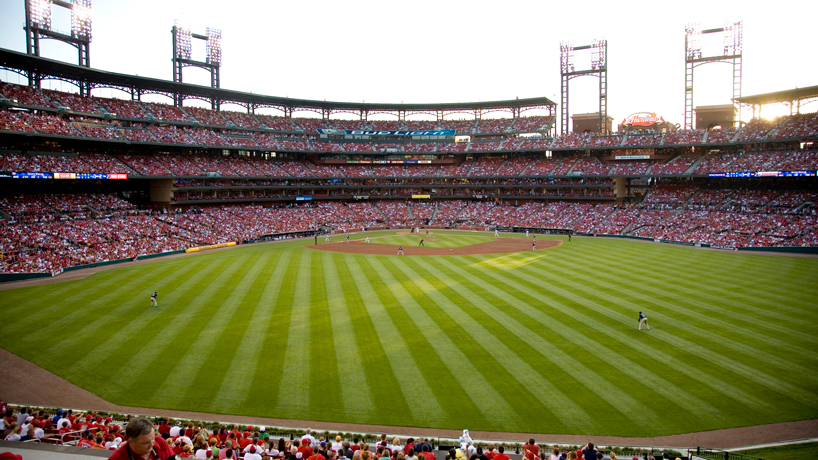
A view from the bleachers in Busch Stadium.
“There’s something about it,” Sexauer said. “It’s more like a home. When I go to those other stadiums, they’re all clearing out after the seventh inning, and they’re all going to their cars, watching the portable TV sitting around drinking. It’s what goes on inside the stadium that matters, not at your car. It’s not about the beer.”
When Sexauer talks about the Cardinals, her passion is evident. Her fascination with baseball began at the age of 12 when a friend invited her to a Cardinals game against the Milwaukee Braves at Sportsman’s Park in the ’50s.
“I walked in there and it was like no other park I had ever seen before,” Sexauer said. “I was used to Forest Park or an amusement park, and I just sat there in awe.”
After the game, she urged her parents to take her back. There wasn’t a lot of disposable income in a working-class family with four kids, but they made it work.
“I believe it was a Friday night doubleheader that summer,” Sexauer said. “Admission was something ridiculous, like 50 cents, so it was a special. They just decided the whole family would go.”
Her enthusiasm for the Cardinals spread to the family and attending opening day became an annual family ritual. When Sexauer couldn’t attend games in person, she would sit by the radio and keep score.
She didn’t know this would lead to a book, though.
Now a retired professor with a PhD, she didn’t imagine she would even get a bachelor’s degree. Sexauer started her academic career with one class at St. Louis Community College at the age of 40.
“I only took one course to see if I could make it,” she said.
By any measure, she did. An English professor encouraged her to take honors classes at SLCC, which led her to study history at UMSL. Her professors at UMSL then convinced her to pursue a PhD, which seemed like a more manageable undertaking than leaving the city she loved.
“They said, ‘The only way, if you’re going to write about the city of St. Louis, the only way to do it is to leave so you actually see it,’” Sexauer said.
Initially, she resisted but eventually had to admit her professors were right.
During the course of her PhD at the University of Cincinnati, Sexauer did write about St. Louis – a 35-page paper on the Cardinals stadiums for a class on material culture. It went into a drawer until her first year at UW–Marathon County, now the Wausau campus of the University of Wisconsin–Stevens Point.
She published the paper and coincidentally had the opportunity to present it at a conference in St. Louis. A representative from Northern Illinois Press approached her about turning the paper into a book, but Sexauer was unconvinced of its potential until a discussion with her dean.
“He said, ‘You know how many people write a book and can’t get it published?’” she said.
It was nearly 30 years in the making, but her book is finally being released this month, during another improbable Cardinals post season run.
“I’ve been to every Cardinals World Series, at least one game since 1964,” Sexauer said. “Until I’m physically unable to go, no matter how far I have to drive, what I have to cancel, what I have to do, I’m going to be in that stadium for the World Series. And I will be there this fall.”






